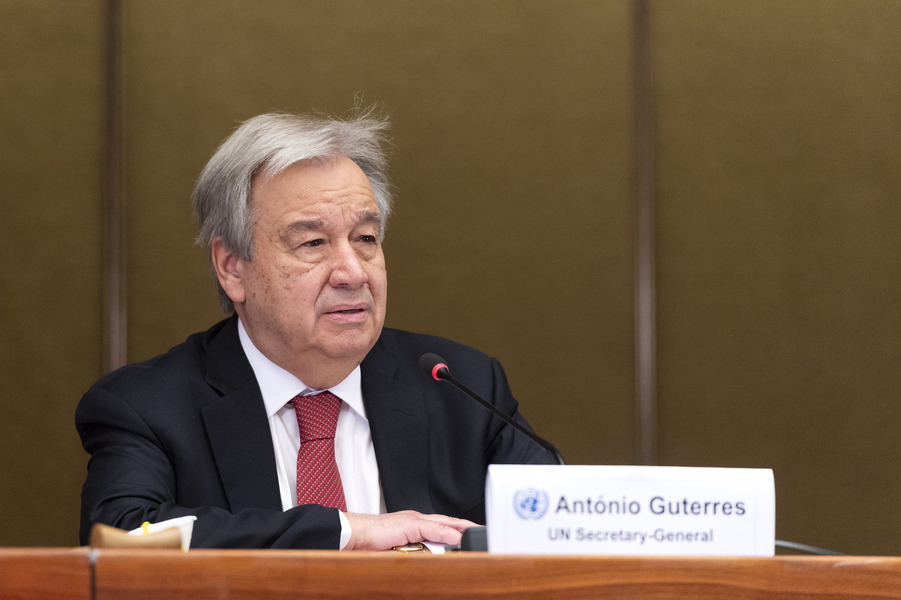Amnesty International Responds
Avner Gidron, senior policy adviser with Amnesty International, responds to my discussion of Amnesty's new report on drone strikes in Pakistan:
Perhaps it is not surprising that Benjamin Wittes disagrees with Amnesty International’s assessment of the lawfulness of particular US drone strikes in Pakistan. We start from different assumptions about how to apply international law to the USA’s targeted killing program.
Published by The Lawfare Institute
in Cooperation With

Avner Gidron, senior policy adviser with Amnesty International, responds to my discussion of Amnesty's new report on drone strikes in Pakistan:
Perhaps it is not surprising that Benjamin Wittes disagrees with Amnesty International’s assessment of the lawfulness of particular US drone strikes in Pakistan. We start from different assumptions about how to apply international law to the USA’s targeted killing program. Amnesty International rejects the notion that there is a global armed conflict between the USA and al-Qa’ida and associated forces and the proposition that it is lawful for the USA to kill individuals they designate as members of such forces anywhere in the world at any time. That is not to deny that the USA is a party to actual armed conflicts, such as in Afghanistan and, arguably, parts of Pakistan (situations which meet the necessary criteria for non-international armed conflict: intensity of the fighting and organization of the parties). However, we can probably agree that the lack of transparency of the US administration -- combined with the difficulty of making factual assessments in areas to which access is limited -- means that it is virtually impossible to reach definitive conclusions about what legal standards to apply to particular attacks. For example, as Amnesty International wrote in its report, drone strikes in North Waziristan, including those we examined in detail, could be taking place as part of the spill-over of the non-international armed conflict from neighboring Afghanistan. Thus the lawfulness of US attacks in North Waziristan that target Afghan Taliban fighters would be assessed by their compliance with the rules of international humanitarian law, which allow parties to directly attack combatants and those directly participating in hostilities. But without more information from the USA we can’t be sure whether this is what is taking place. Regarding the case of Mamana Bibi, a 68-year-old woman killed by a US drone strike in October 2012, Wittes states that our conclusion that she was unlawfully killed leaves open only the question of whether this was a war crime or an extrajudicial execution. This is not the case. It is possible that her death resulted from a failure to take necessary precautions in attack; this would be a violation of IHL, but not necessarily a war crime. And if only international human rights law applied, the fact that she was unlawfully killed would not necessarily mean that she was the victim of an extrajudicial execution. Not every violation of the right to life amounts to an extrajudicial execution (which is a deliberate and unlawful killing). But ultimately, these fine points of law are not what matters to her family. They want to know why she was killed and they want redress. The US administration’s refusal to acknowledge responsibility, let alone address the family’s concerns, is making this impossible. Wittes expresses dismay that Amnesty International raised the 4 June 2012 drone attack in Esso Khel, in which Abu Yahya al-Libi was killed. This case was included to highlight concerns about the phenomenon of “rescuer attacks” or “follow-up strikes”. As for al-Libi himself, the question as to whether he was directly participating in hostilities and therefore “targetable” isn’t primarily about what he was doing at the time he was killed. What really matters is whether the attack was carried out as part of an actual armed conflict (such as the NIAC in Afghanistan) and his role in that conflict. If the attack that killed al-Libi was part of an armed conflict, the lawfulness of the attack depends on its compliance with the rules of IHL. What al-Libi was doing at the time he was killed (and who was with him) would be relevant in assessing whether the attack was proportionate and whether the second strike complied with the prohibition of targeting civilians not directly participating in hostilities who are involved in rescuing the wounded and the prohibition of targeting the wounded themselves. Outside an armed conflict, the policing standards that derive from international human rights law would apply to the exclusion of IHL. In such situations, intentional lethal force may only be used when strictly unavoidable to protect against an imminent threat to life. And strikes whose purpose is to kill individuals are not likely to be lawful. The hypotheticals in our report are mostly attributable to a deliberate policy of obfuscation and non-disclosure by the USA. If the administration refuses to disclose who they are targeting and why, and what rules they are following, how can drone strikes’ compliance with relevant international law be assessed? If there are no independent and impartial investigations into civilian deaths, how will lessons be learned and wrongdoing addressed?
Benjamin Wittes is editor in chief of Lawfare and a Senior Fellow in Governance Studies at the Brookings Institution. He is the author of several books.




-(1).png?sfvrsn=7aa9b087_9)
